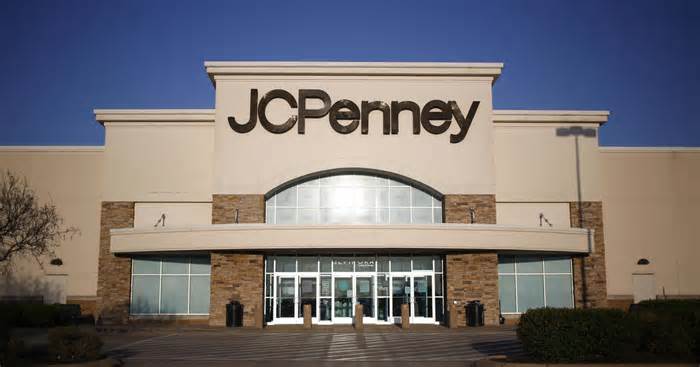JCPenney on Thursday announced plans to spend more than a billion dollars through the end of 2025 to revive the famous but long-suffering 121-year-old chain of branch stores.
The cash will be used to renovate JCPenney stores, modernize their app and online grocery shopping, and make their origin network more effective so online orders are delivered faster.
JCPenney CEO Marc Rosen, who took over the company in November 2021 and held executive positions at Levi Strauss and Walmart, is revamping the chain’s offering for its more sensitive middle-income customers with affordable fashion and housewares.
“Now more than ever, it’s time to look at this and make sure we’re delivering that experience to our customers,” Rosen said in an interview with The Associated Press. This is an update on the tactics of previous control groups that pursued the wealthiest buyers with offers of fancy parts and primary appliances.
As part of the plans revealed Thursday, boxes that were in all JCPenney stores will be replaced with a single checkout area. Buyers will also see brighter lighting and a fresh coat of paint. Store workers will receive mobile devices to scan stock and call shoppers’ purchases. And the chain is upgrading its Wi-Fi networks to speed up connections in stores.
But JCPenney is catching up with competitors — from discounters to retail branches like Macy’s and Walmart — that have modernized their retail establishments and online operations, highlighting the demanding situations facing the Plano, Texas-based retailer.
JCPenney, which emerged from the Chapter 11 reorganization in December 2020 with new owners, is only dealing with years of internal trouble, but also faces a dubious economy that has challenged healthier branches.
The chain’s main consumers are budget-conscious families, with median incomes ranging from $50,000 to $75,000. They have been hit hard by emerging commodity prices and high interest rates, making borrowing and credit card borrowing more expensive.
Rosen said JCPenney customers spend $700 more per month than they did two years ago just on basic necessities like rent, fuel and food. He noted that they are for competitive costs, as well as for buying food wisely.
But in this challenging economy, JCPenney has a role to play, Rosen said. He believes shoppers find other retail locations too expensive, while online stores and discount outlets don’t offer the visitor service JCPenney shoppers are looking for.
The company filed for bankruptcy in May 2020 after the pandemic-induced temporary store closure put the already suffering store at greater risk.
Under the leadership of new owners – Simon Property Group Inc. and Brookfield Property Partners LP – JCPenney closed about a quarter of its 850 stores. It now has about 650 stores. Its debt is less than $500 million, down from just $5 billion at the time of its bankruptcy filing, Rosen said.
As part of the new renovation campaign, Rosen said one hundred outlets have been renovated. The plan is to renew between 50 and a hundred per year, he said.
The store has rebuilt its good-looking business after Sephora announced a deal three years ago to exit the chain for rival Kohl’s. As part of its redesign, it has highlighted good-looking products that cover a wider diversity of skin tones. Consumers are of color.
Simon Property made an unsuccessful bid to acquire Kohl’s in April 2022 for $8. 6 billion, the New York Post reported at the time, contributing resources to the negotiations.
The store introduced new logos such as Mutual Weave for menswear and reintroduced some national logos such as Adidas. It has introduced national brands such as Forever 21, owned by Authentic Brands Group LLC, which owns a minority stake in JCPenney. He also teamed up with a famous stylist. Jason Bolden to recreate the collections of two of his store’s logos, J. Ferrar and Worthington, a long-standing logo he recovered.
More importantly, Rosen said JCPenney has worked hard to keep staples like jeans, white T-shirts and linen ensembles stocked with all the diversity or full collection of colors, a factor that has plagued the chain and frustrated shoppers.
Rosen said the adjustments have helped increase the number of repeat visits from existing consumers to retail and online outlets. More than 50 million consumers have visited JCPenney in the past three years, he said. After about five years of decline, consumers now come to JCPenney more frequently, a 5% increase. As for good-looking departments, 25% are new consumers, he noted.
“It shows us that if we get an applicable core experience, more will come to us because they know the brand, they’re already buying food from us, and now they’re starting to buy from more parts of the world. moreArray,” he said.
Rosen came to JCPenney when its annual earnings hovered between $8 billion and $9 billion and that figure held steady last year. It expects it to decline this year due to all the economic uncertainties. Its annual profit was about $11. 2 billion when it filed for bankruptcy.
Neil Saunders, chief executive of GlobalData Retail, said he had recently visited a JCPenney store in Phoenix and that outlets looked cluttered and there were gaps in shelves, but praised the space’s good looks.
“They may have stabilized the ship, but they didn’t revive the brand,” he said.
Quotes were delayed by at least 15 minutes.
Market knowledge through ICE Data Services. ICE Limits. Powered and implemented through FactSet. News via Associated Press. Legal Statement.

